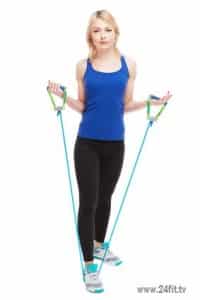20 Ways Exercise Improves Health and Function
There are a hundred ways to exercises but we can lump exercise into three broad categories: strength training (weightlifting, core training), cardiovascular conditioning (running, cycling, aerobics), and flexibility training (yoga, stretching). Let’s look at the specific ways in which each promotes optimal health and function:
Flexibility Training
- Improves range of motion
- Reduces risk of injury
- Reduces post-workout soreness
- Improves posture
- Improves circulation to muscles
- Enhances neuro-muscular coordination
- Improves balance
Cardiovascular Conditioning
- Increases oxygen intake
- Increases the body’s oxygen use efficiency
- Increases cardiac output and efficiency
- Increases blood volume
- Improves stamina
- Improves lung health and capacity
- Reduces blood pressure and lowers resting heart rate
- Improves cholesterol ratio (HDL/LDL)
- Increases insulin sensitivity
- Improves circulation to active muscles
- Decreases symptoms of anxiety and depression
Strength Training
- Maintains strength and power
- Increases lean body mass
- Greater core strength prevents back problems
- Boosts metabolic rate by up to 15%, aiding in weight control
- Prevents osteoporosis
- Increases ligament tensile strength
- Increases tendon tensile strength
The 24 Fit Programme, developed by Robert Forster in conjunction with Herbalife , includes stretching exercises, metabolic workouts and strength training. Forster of Santa Monica is a physical therapist and is Founder and CEO of Phase IV Scientific Health and Performance Center in Santa Monica California specializing in rehabilitation and health and fitness programs for athletes and the general public.
One key to exercises is to find something that you can do on regular basis that dosent take too long i.e. 30 minutes, thats habit forming. With 24Fit alternate daily between cardio and strength training exercises, and include flexibility /stretching exercises with every workout.
Thanks to Dr. Louis Ignarro and Dr. Andrew Myers for this list. Health Is Wealth

